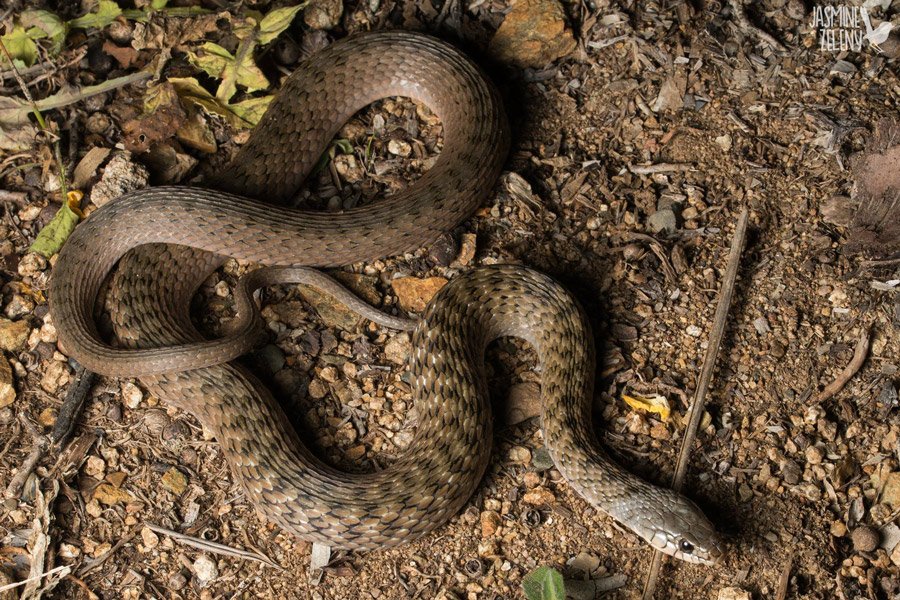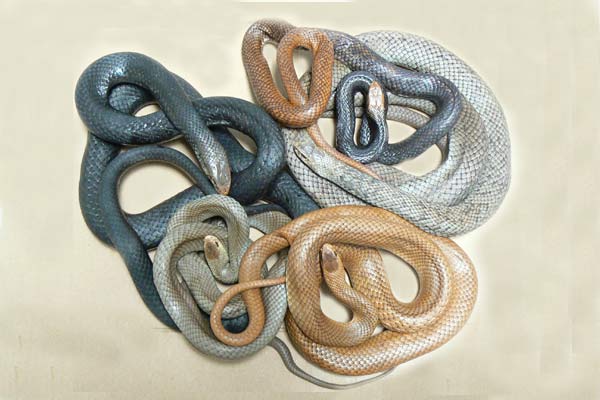When is a brown snake not a brown snake?
When it’s a harmless keelback snake of course
As you can imagine, a brown coloured snake is often going to be labelled as an eastern brown snake…but as I say time and time again, not all brown coloured snakes are eastern browns, and not all eastern browns are brown in colour (see picture at bottom of page).
Keelback snakes aren’t an overly large species, generally around the 60-70cm mark, but specimens of a whopping 93cm have been recorded.
Identifying features
The keelback is a species that can be quite variable in colour across its range. Here, in South East Queensland, they’re a grey-brown colour with quite faint, irregular banding and many light flecks between the scales. Their belly is cream in colour.
One of the most distinctive features of the keelback snake are its strongly keeled scales. These keels create very obvious ridges that run down the length of the snakes body, I have included a close up shot of these ridges.
Looking more closely, some other features we may look for are the upturned mouth of the keelback which makes them look like they’re smiling, the dark bars between the scales on the upper lip, and one other very important feature that it shares with other colubrid snakes – a loreal scale. This is a scale between the nasal scale and preocular scale (the scale in front of the eye). Our highly venomous species which may be confused with the keelback belong to a different family of snakes (elapids), which do not possess this scale. I have included a close-up head shot where I have highlighted these features.
We would never expect anyone to get close enough to see such details, but if you were interested in knowing all the little things that help separate these species, this is what we look at.
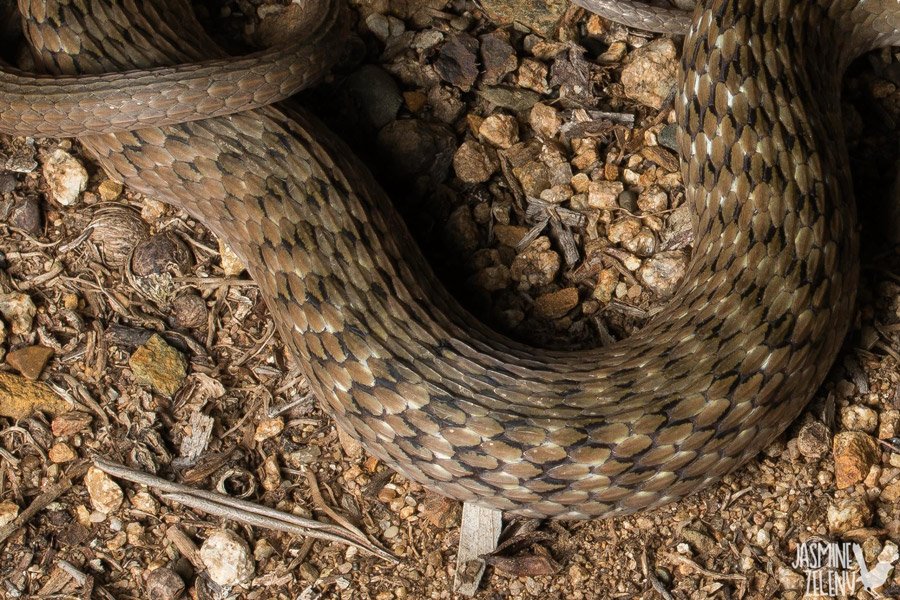
One of the most distinctive features of the keelback snake are its strongly keeled scales. These keels create very obvious ridges that run down the length of the snakes body

A close up look at the upturned mouth of the keelback which makes them look like they’re smiling, the dark bars between the scales on the upper lip, and one other very important feature that it shares with other colubrid snakes – a loreal scale. This is a scale between the nasal scale and preocular scale (the scale in front of the eye).
Diet
Keelbacks primarily feed on frogs, but they may also feed on fish, reptile eggs, and mammals. They hunt both during the day and night, and interestingly, they able to successfully feed on the introduced cane toad without ill effect. Although, if their eyes are bigger than their stomach and they try to tackle a large toad, the toxins will affect them and it can be fatal for the snake.
So, how are keelbacks able to deal with these toxins? Their South-east Asian keelback cousins commonly feed on toads that possess poison secreting glands, and somewhere along their evolutionary line, our keelback snakes are likely to have encountered these due to their South-east Asian origin.
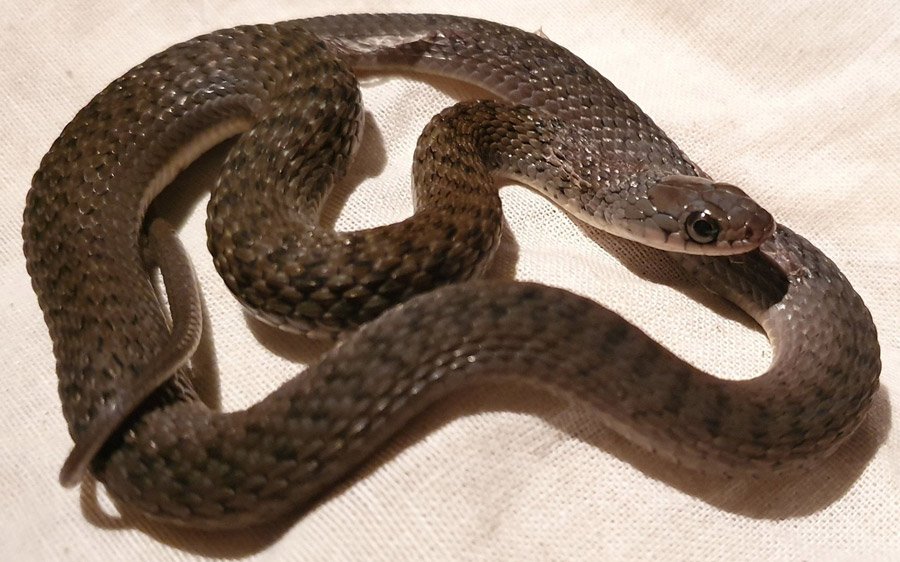
A juvenile keelback snake
As you would imagine, you’re likely to find these snakes near a water source. Whether it be a creek line, wetlands, or a dam. They’re a great little snake to have around and the worst thing they can do to you is emit a very offensive smell from their anal glands in an attempt to deter any threats – now I’m not going to lie, it’s absolutely disgusting!
I’ve tried to focus on describing what defines this species rather than listing all the differences that separate it from the many species it can be confused with.
In any case, it is recommended that you treat every snake as potentially dangerous and seek identification/advice from a local snake catcher.
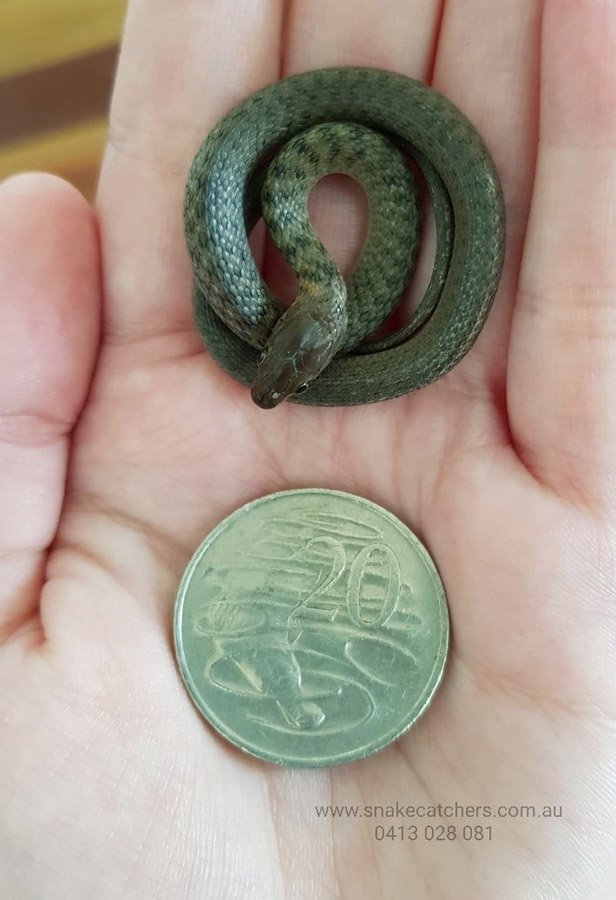
A freshly hatched juvenile keelback snake is the size of a 20c piece
For snake advice and relocation in Brisbane, GC, Logan and Ipswich you can contact us 24/7 on 0413 028 081 or visit our Facebook page Snake Catchers Brisbane & Gold Coast

